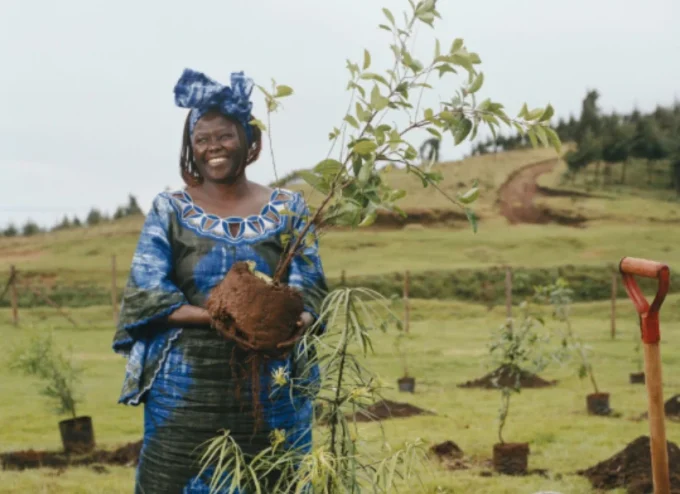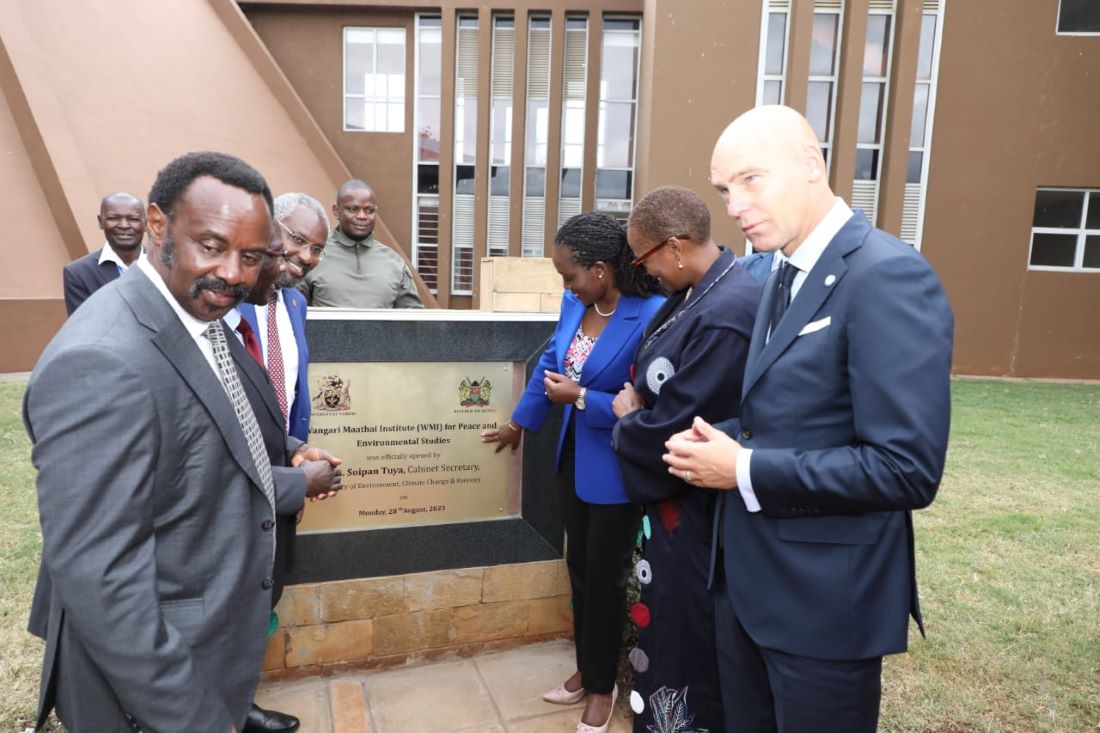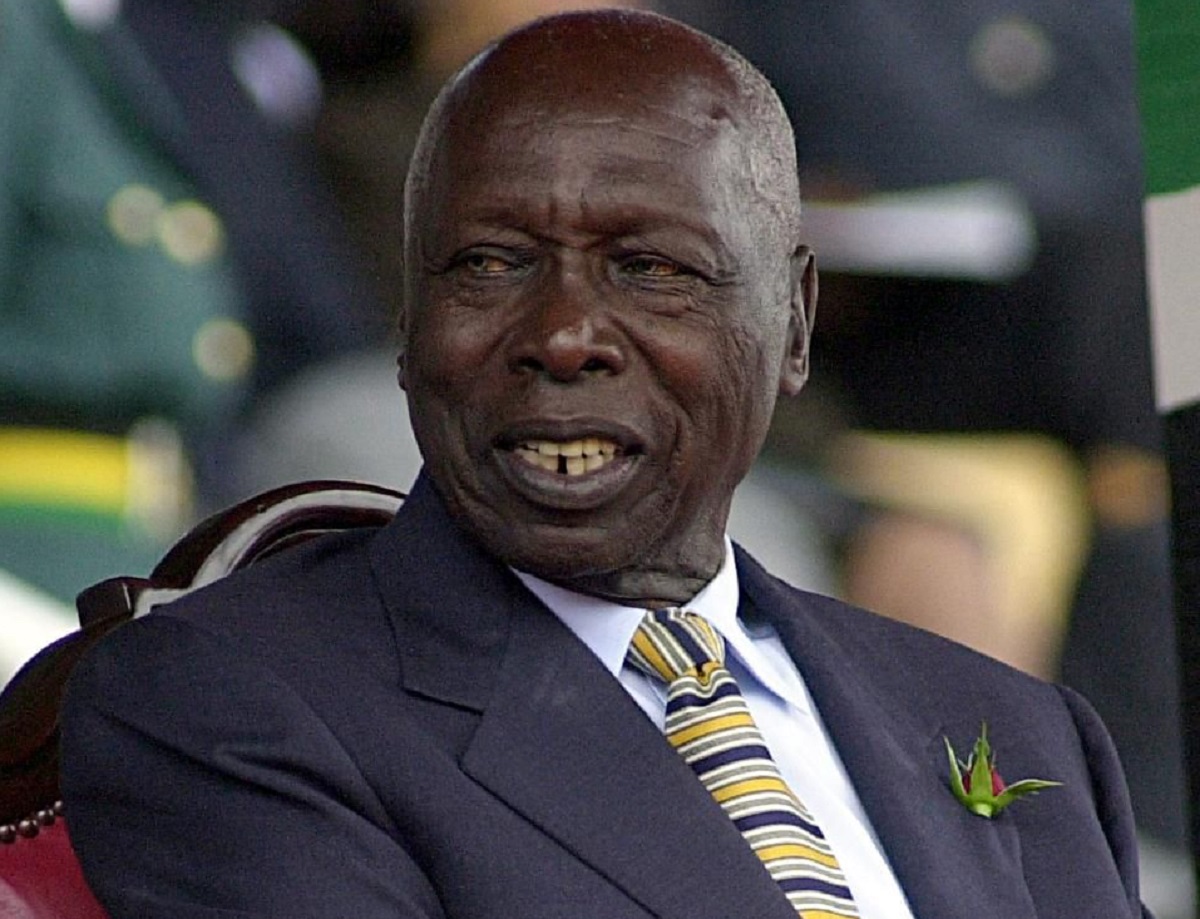“[dropcap]L[/dropcap]est We Forget.” So reads a large billboard erected by founder of the Green Belt Movement the late Prof Wangari Muta Maathai at one corner of Nairobi Uhuru Park along Kenyatta Avenue.
The history of the events leading to the erection of that billboard did not come out of nothing. The events remain a spine-chilling experience of sorts. I was there to witness one of Kenya’s harrowing political swings.
A day that had started on a low key with very little activity would end up in total mayhem, tear-gas and global headlines. When the Daily Nation News Editor Laston Mutegi Njau – a very shrewd, courageous and outspoken journalist – despatched me to be covering, on a daily basis, the hunger-striking mothers of political prisoners in the last quarter of 1991 at the Anglican All Saints’ Cathedral, little did I know that in that assignment lay a long, close relationship between me and Maathai that would last exactly 20 years and which I would live to remember and cherish.
The mothers of the political prisoners, among them firebrand Koigi wa Wamwere and lawyers Mirugi Kariuki and Rumba Kinuthia, were protesting the continued incarceration of their sons on flimsy political excuses couched in descriptions such as saboteurs, subversives, agents of foreign masters, disgruntled elements, dissidents etcetera, etcetera.
The elderly women had been there for quite some time. In September, only four months after I had left the Kenya News Agency (KNA), Mutegi – in his wisdom, or lack of it – chose me as the perfect person to be idling with the women, ‘just in case’, since they were – according to the mood in the news room – no longer making news on grounds that they were repeating themselves over and over, each coming day and their core demands had been extensively reported in the local media such that what they were saying at that time was not making headline news any more.
Day in, day out I would wake up early morning and head to All Saints’ Cathedral. Sometimes, the women would make news, sometimes not. But it was a good place to be. Always. If one was not making acquaintances with Nairobi-based foreign journalists such British ‘toughee’ Louis Turnbridge of the BBC, you would be listening to some inspiring, if not radical, teachings by the cathedral’s provost, the indefatigable Rev. Peter Njenga, a very charismatic and widely read figure who was later to become the Bishop (now retired) of Mt. Kenya South.
More from this author
If Rev. Njenga was not there, at least the Presbyterian Rev. Timothy Murere Njoya would pass by. Njoya’s passing-by, in itself, whether to greet or pray for the mothers, would attract press corps and make news. Headline news for that matter.
On other occasions, some wannabe politicians craving for a photo or a paragraph in the mainstream print media would also make brief appearances – the State-leaning electronic media (at that time KBC and KTN) did not cover such events as they were deemed anti-government – to talk to the mothers, address the media in some waxy English with references to the Bible on challenges of Moses, David, Daniel, John the Baptist and later on Jesus Christ himself and end with quotations of several sections of the then constitution that guaranteed freedom of expression, association, worship, opinion and disallowed detention without trial.

Then, one day in March of 1992, Prof. Maathai came on the scene. She would talk to the women mostly in their native Kikuyu language, pray with them and listen to the summonses of either Rev. Njenga, Rev. Njoya or Archbishop David Gitari.
The making of Freedom Corner
Her arrival made instant news. The international media focused their camera lenses on the dark woman from Tetu. They knew her because she had by that time established herself as a voice of the oppressed, a champion of environmental conservation and won numerous global awards in recognition of her relentless environmental crusades. She announced that the women would plant trees and henceforth pitch tent at one corner of Uhuru Park, which she christened ‘Freedom Corner’. As fate would have it, Freedom Corner was the place a State Funeral in her honour was conducted after her demise ahead the cremation of her remains in October 2011.
During her funeral service, only then President Mwai Kibaki and Prime Minister Raila Odinga could probably evince some emotions regarding that part of Uhuru Park, for they were among the Opposition honchos who occasionally joined the mothers, in solidarity with their cause, at the Freedom Corner.
The move to pitch tent at Freedom Corner was a change of tact. It, obviously, did not please the government which had continually been receiving bad press in Western capitals owing to Nairobi’s uncompromising ceaseless crackdown on dissenting opinion.
SEE ALSO: How journalist trekked 200km in Moyale after simple miscalculation
KANU, the ruling party and the entire regime, had brazenly embraced despotism with a tinge of gusto and glee wholesome; its critics being crashed on a scale of extreme brutality that left some dead and others maimed in the process. As a result, the Western donors had frozen economic aid to Kenya and demanded for the establishment of expansive democratic space and respect for human rights.
[dropcap]T[/dropcap]he Freedom Corner ensemble did not last long. It had attracted visits from the then kingpin Opposition leader Jaramogi Oginga Odinga and a number of his key lieutenants – among them radical lawyers Paul Muite, James Orengo, the late Dr. Oki Ooko Ombaka, the late George Moseti Anyona, Democratic Party of Kenya (DP) leader Mwai Kibaki (later President of Kenya), the late John Keen, former Gichugu MP Martha Karua (now Kirinyaga gubernatorial candidate) and many other top-notch activists.
These visits received international media attention. The government was not amused. On the fourth day of the Freedom Corner team-ups, the government struck back. I witnessed the brutality. In the middle of it. The government hit hard. Very hard.
I was talking to a police friend James Andanje Tali (a former classmate of mine at Malava Boys’ High in Kakamega County whom we simply called Jat) and Louise Turnbridge when the government struck. An order was given through a loud speaker: “Clear the Area Completely.”
The police swung into action, they first threw teargas at the women, then as they scampered helter-skelter amid the smoke of the gas, the police landed on the them with rungus, whips and gun batons, bludgeoning the elderly mothers senseless.
In a twinkling, the striking elderly women stripped naked. Most of them were over 70 years and those of us nearby noticed that age had really gnawed at many parts of their wrinkled and sagging bodies. It was later to be explained that the harmless mothers did so as a last resort of defence and a curse to the autocratic administration.
However, Maathai did not strip. Also not stripping was a young lady regular at the Freedom Corner by the name Njeri Kabeberi, a vocal civil society activist from the Release Political Prisoners (RPP) lobby group who would many years ago become – until last year – the executive director of Centre for Multi-Party Democracy (CMD). However, Maathai was one of those who were injured.
As I and Tunbridge ran towards the Haille Sellasie Avenue side of Uhuru Park, we could hear the women’s loud wails amid the tear gas that had consumed the entire park. We came back after about 30 minutes only to find my helmeted and baton-wielding police friend in tears.
He could not talk to me. He just stared at me and continued sobbing. What happened in the melee had shocked and shaken him and his colleagues. The elderly women, with no other weapon to defend themselves, had – a show of defiance – actually stripped naked in from of them, forcing the mostly youthful policemen to retreat with their heads down.
Months, later Jat told me how he had been hopeless, helpless and felt like quitting the service. He narrated to me how his senior colleagues had hit the women and left them unconscious without he himself being in a position to do anything to assist them, as he was part of the invading force.
It was clear in his mind that Maathai had been the prime target of the operation and that the senior cops among them had different instructions from what the juniors had. The intention, it would seem, was to eliminate or maim, the outspoken co-ordinator of the Green Belt Movement.
He shuddered at that realisation. Then the stripping of the women had shattered him completely – with he too fearing that the women’s ‘curse’ would ensnare him as well. He maintains to date that he never hit any of the women. He later became a born-again Christian and is nowadays a prominent evangelist within the police service.
Maathai and the wounded elderly women were taken to Nairobi Hospital where we followed them to find out how they were fairing on. They would stay there for some days before their release to recuperate at home.
SEE: The story Uhuru Kenyatta asked me never to write
Meanwhile, following the humiliating incident more security personnel were on that night deployed at the area to cordon off the entire Uhuru Park and All Saints’ Cathedral, with both venues being turned into no-go-zones.
The mothers of political prisoners had made their point. They hit international headlines and for some time to come Kenya once again became a talking point again in Western capitals. In a few weeks’ time, the political prisoners were released. Nine months later, in December 1991, then President Daniel arap Moi gave in to pressure and accepted the re-introduction of multi-party democracy in Kenya by allowing the scrapping Section 2 (A) of the Constitution which had made Kenya a de jure one-party State since 1982.
The author is a Revise Editor with the People Daily newspaper. E-mail: [email protected]
[crp]











![Communist Party of Kenya (CPK) members at a demonstration. The party challenged NMS over ongoing works at Uhuru Park. [Photo/ Courtesy]](https://businesstoday.co.ke/wp-content/uploads/2021/12/FE3DpRDWQAAFRht.jpg)

Incredible. Quite informative. Keep doing the good work.
Please let me know where I can get more of your articles.
Blessings